Válvula de esfera flutuante vs válvula de esfera munhão: qual é a diferença?
A principal diferença entre válvulas de esfera flutuantes e válvulas de esfera munhão está na forma como a esfera é suportada.
Para contextualizar, a esfera não é fixa (“flutua”) em válvulas de esfera flutuantes, o que significa que ela depende da pressão do fluido para empurrá-la contra o assento a jusante para vedação.
Enquanto isso, as válvulas de esfera munhão reduzem o estresse do assento e permitem uma operação mais suave sob alta pressão porque um munhão ancora a esfera.
Para entender melhor cada uma dessas válvulas, este artigo fala sobre as principais diferenças em aplicações e princípios de funcionamento.
Válvulas de esfera flutuantes: Definição
Uma válvula de esfera flutuante é um tipo de válvula de um quarto de volta em que a esfera não é suportada por um munhão e flutua quando a pressão do fluido é aplicada.
A esfera pressiona contra as sedes da válvula para formar uma vedação firme.
Como funcionam as válvulas de esfera flutuantes
Duas sedes de válvula seguram a esfera no lugar. No entanto, a esfera não é fisicamente segura.
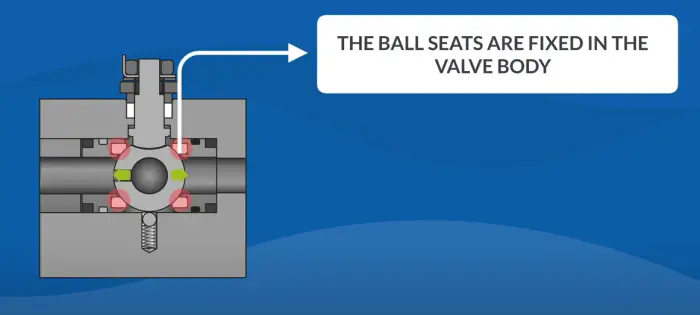
Quando a esfera se move levemente, ela permite que a pressão do fluido a empurre para o assento a jusante, criando uma vedação firme.
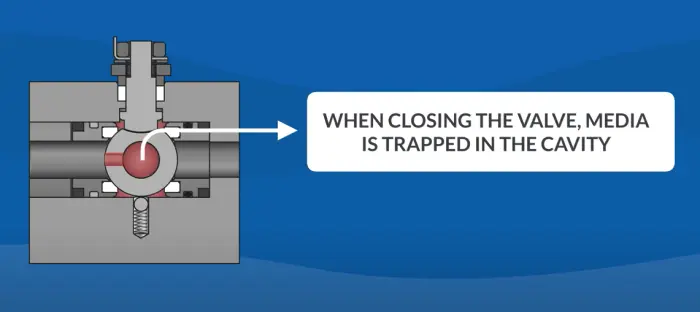
Quando a manivela é girada 90 graus, a esfera gira, permitindo ou bloqueando o fluxo do fluido.
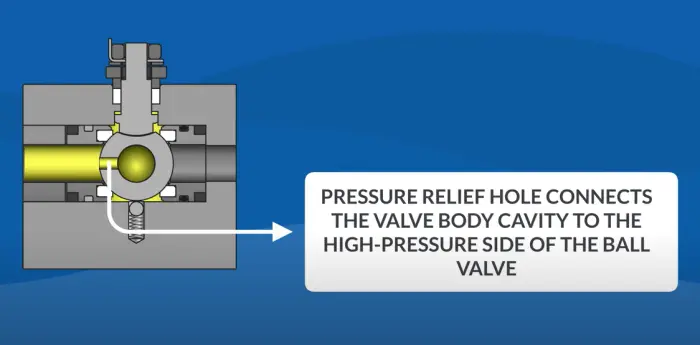
Componentes de válvulas de esfera flutuantes
- Corpo:A casca externa que abriga as partes internas.
- Bola: O componente chave que gira para controlar o fluxo.
- Assentos: Posicionado em ambos os lados da bola para garantir a vedação.
- Tronco: Conecta a esfera ao atuador ou à alça.
- Alça/Atuador: Permite a operação manual ou automática da válvula.
Características das válvulas de esfera flutuantes
#1. Design compacto
Válvulas de esfera flutuantes são tipicamente menores e mais compactas do que válvulas de esfera trunnion. Isso as torna ideais para aplicações onde o espaço é limitado.
#2. Eficaz para pressões baixas a médias
Eles apresentam bom desempenho em sistemas de baixa a média pressão, o que proporciona excelentes capacidades de vedação.
#3. Estrutura simples
Menos componentes facilitam a manutenção e a instalação.
Desvantagens a considerar
#1. Maior torque necessário
O projeto exige mais torque para operar, especialmente em pressões mais altas, o que pode desgastar os assentos mais rapidamente.
#2. Limitações de pressão
Válvulas de esfera flutuantes não são adequadas para aplicações de pressão muito alta porque a esfera depende inteiramente do assento para vedação.
Válvulas de esfera Trunnion: Definição
Uma válvula de esfera munhão difere de uma válvula de esfera flutuante porque a esfera é ancorada por um munhão (um tipo de pino ou eixo).
Este design permite que a bola permaneça no lugar mesmo quando alta pressão é aplicada, tornando-a adequada para aplicações de alta pressão.
Como funcionam as válvulas de esfera Trunnion
Nas válvulas de esfera munhão, a esfera é fixada no lugar por um munhão, com os assentos se movendo para formar a vedação.
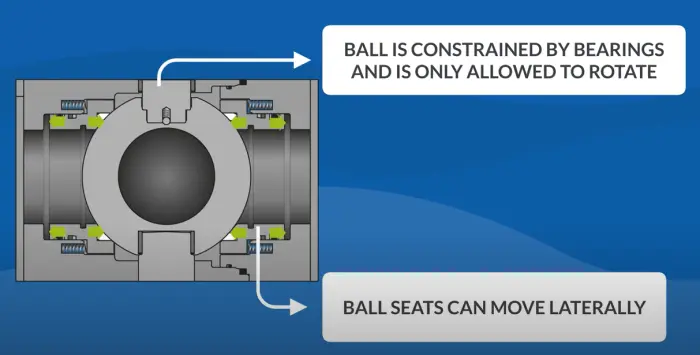
Isso reduz o estresse nos assentos, permitindo uma operação suave mesmo sob alta pressão. A válvula abre ou fecha girando a esfera com um giro de 90 graus da manopla ou atuador.
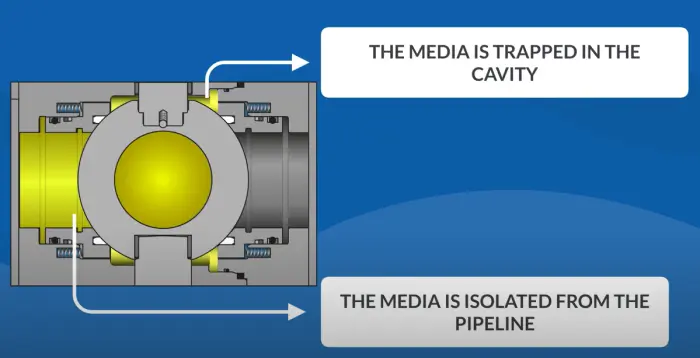
Componentes de válvulas de esfera munhão
- Corpo: O invólucro externo que abriga todos os componentes internos.
- Bola: Preso firmemente no lugar pelo munhão.
- Assentos: Pressionado contra a bola por molas ou outros mecanismos para criar uma vedação firme.
- Tronco: Conecta-se à bola para controlar seu movimento.
- Munhão: Uma âncora mecânica que sustenta a bola e reduz seu movimento.
- Alça/Atuador: Controla o movimento da bola para abertura e fechamento.
Características das válvulas de esfera Trunnion
#1. Adequado para aplicações de alta pressão
As válvulas de esfera Trunnion são construídas para lidar com altas pressões sem comprometer o desempenho da vedação.
#2. Torque operacional mais baixo
Como a esfera é fixa, é necessário menos torque para operar, reduzindo o desgaste da válvula.
#3. Maior vida útil
Devido à menor tensão nos assentos, essas válvulas têm uma vida útil mais longa em comparação às válvulas de esfera flutuantes.
Desvantagens a considerar
#1. Design complexo
A válvula de esfera munhão tem mais componentes, o que pode tornar a manutenção e os reparos mais complexos.
#2. Custo mais alto
Devido à maior complexidade e às necessidades de material, as válvulas de esfera munhão são normalmente mais caras do que as válvulas de esfera flutuantes.
Válvula de esfera flutuante vs válvula de esfera munhão: a diferença nas aplicações
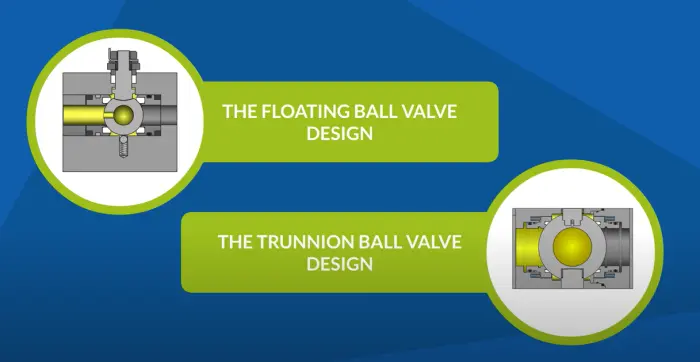
| Critérios | Válvula de esfera flutuante | Válvula de esfera munhão |
| Faixa de pressão | Baixa a média pressão | Adequado para aplicações de alta pressão |
| Requisitos de torque | Maior torque necessário para operação | É necessário um torque menor devido à ancoragem da esfera |
| Tamanho | Mais compacto | Geralmente maior devido a componentes adicionais |
| Mecanismo de vedação | Depende da pressão do fluido para criar uma vedação | Os assentos se movem para fixar a bola no lugar |
| Manutenção | Mais fácil devido a menos peças | Mais complexo, exigindo manutenção detalhada |
| Custo | Mais acessível | Mais caro devido ao design complexo |
Como escolher a válvula certa para suas necessidades
Selecionar entre uma válvula de esfera flutuante e uma válvula de esfera trunnion depende dos requisitos específicos da sua aplicação. Aqui estão alguns fatores a serem considerados:
#1: Níveis de pressão
Se você estiver lidando com baixa a média pressão, uma válvula de esfera flutuante provavelmente será suficiente. Para sistemas de alta pressão, uma válvula de esfera trunnion é a melhor opção.
#2: Preocupações com torque
Se a facilidade de operação for importante, especialmente em ambientes de alta pressão, as válvulas de esfera munhão são mais fáceis de operar devido aos menores requisitos de torque.
#3: Restrições de espaço
As válvulas de esfera flutuantes são mais compactas, o que as torna ideais para espaços apertados.
#4: Orçamento
Válvulas de esfera flutuantes tendem a ser mais econômicas, enquanto válvulas de esfera munhão oferecem mais durabilidade a um custo mais alto.
Encontrando Fabricantes de Válvulas de Esfera Flutuantes e Trunnion
Um dos principais fabricantes de válvulas de esfera é a Zhejiang Zhedong Valve Corp., Ltd, também conhecida como PANS Valve.
Fundada em 1985, a empresa tem mais de 30 anos de experiência profissional na produção de uma ampla gama de válvulas de aço, incluindo válvulas de esfera flutuantes e munhão.
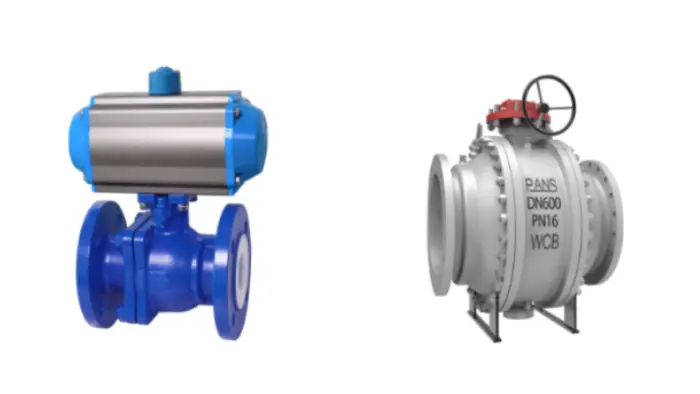
Produtos recomendados:
Localizada em Wenzhou, China, a PANS Valve opera em um moderno parque industrial de 25.000 metros quadrados e emprega mais de 200 trabalhadores qualificados.
Com uma capacidade de produção anual de 3.000 toneladas, a PANS Valve garante um fornecimento consistente de válvulas de alta qualidade para vários setores, incluindo petróleo, produtos químicos, energia e gás natural.
Além disso, a PANS Valve é reconhecida por seu comprometimento em produzir válvulas industriais que atendem ou excedem os padrões internacionais.
Com 60 séries de válvulas e mais de 100 patentes, a empresa é um membro importante de grandes associações do setor, como CNPC e CPAC.
A PANS Valve fez parcerias de sucesso com clientes em mais de 60 países, fornecendo soluções personalizadas para líderes do setor na Europa, América e Ásia.
Entre em contato conosco hoje mesmo! >>
- O que é uma válvula de esfera flutuante? Como ela funciona?
- Compreendendo as válvulas de esfera Trunnion: um guia abrangente
- "Como ” link=”https://www.geminivalve.com/valvulas-de-esfera-flutuantes-vs-valvulas-de-esfera-mutundo/”]
- Válvula de esfera flutuante vs. munhão: qual é a diferença?
Procurar
Categorias
Tag
produtos
- Válvula de esfera
- Válvula de esfera flutuante
- Válvula de esfera totalmente soldada
- Válvula de esfera munhão
- Válvula de retenção
- Válvula de retenção de elevação fundida
- Válvula de retenção giratória fundida
- Válvula de retenção tipo wafer
- Válvula DIN
- Válvula globo selada com fole DIN
- Válvula globo DIN
- Válvula de gaveta com haste ascendente DIN
- Válvula de retenção oscilante DIN
- Válvula de Forja
- Válvula de retenção forjada
- Válvula de esfera flutuante forjada
- Válvula de gaveta forjada
- Válvula globo forjada
- Válvula de gaveta
- Válvula de gaveta selada por fole
- Válvula de gaveta plana
- Válvula de gaveta em cunha
- Válvula global
- Válvula globo fundida
- Válvula macho
- Válvula macho de excentricidade
- Válvula macho lubrificada com equilíbrio de pressão invertida
- Válvula macho de órbita
- Válvula macho tipo manga
- Válvula de Polpa
- Válvula de Polpa
- Filtro


